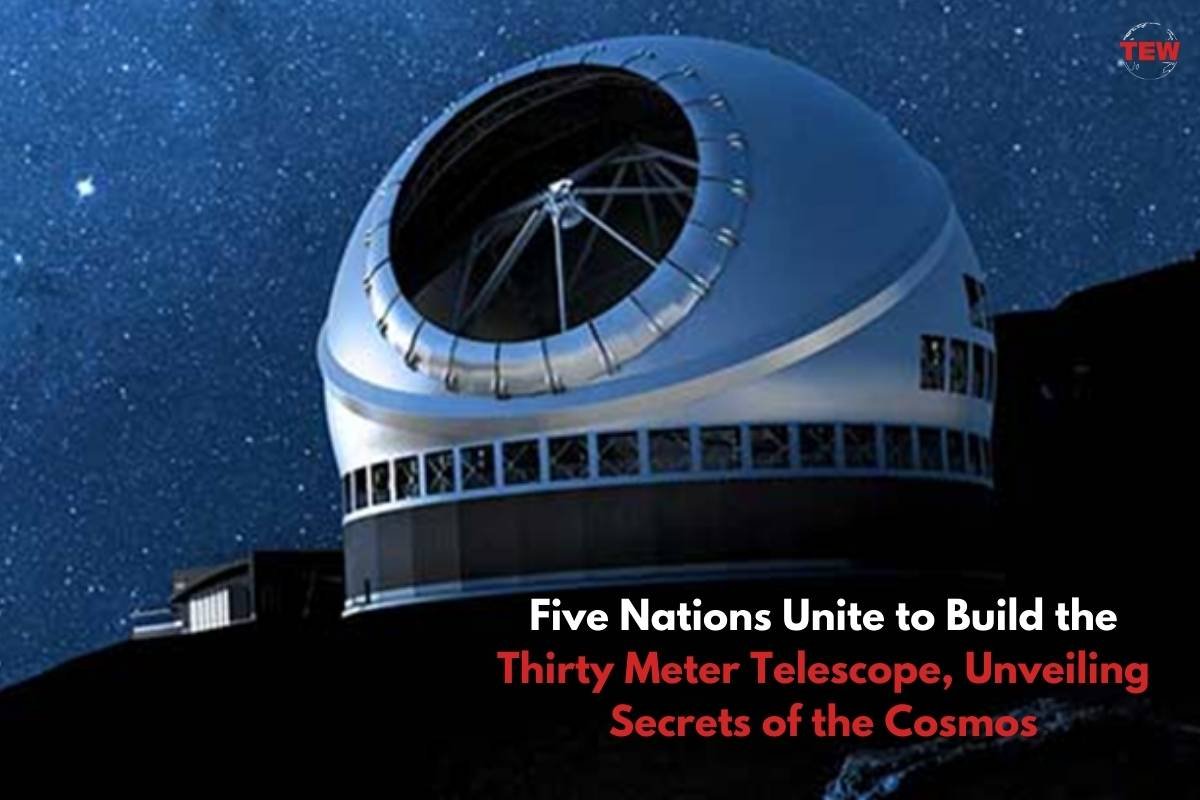In a major international collaboration, the United States, India, Canada, China, and Japan are joining forces to construct the Thirty Meter Telescope (TMT), a revolutionary observatory poised to unlock the universe’s deepest mysteries.
Unprecedented Power for Astronomical Exploration: The TMT will be a cutting-edge astronomical facility designed to address fundamental questions about the cosmos. Its colossal 30-meter primary mirror, the largest ever built, will gather immense amounts of light, enabling scientists to observe celestial objects with unparalleled detail. This revolutionary technology, combined with advanced adaptive optics systems that correct atmospheric distortion, will offer astronomers a groundbreaking view of the universe.
Unlocking the Universe’s Secrets Thirty Meter Telescope,
The Thirty Meter Telescope’s immense capabilities will empower researchers to delve into a vast array of cosmic phenomena. From the formation of the first stars and galaxies to the nature of dark matter and dark energy, the TMT promises to revolutionize our understanding of the universe’s origin, evolution, and structure. Scientists will be able to study distant objects with unprecedented clarity, potentially uncovering new classes of celestial bodies and unraveling the mysteries that have long captivated humankind.
Project Status and Challenges
The TMT project is currently in the development stage, with the proposed location being Mauna Kea, a dormant volcano in Hawaii. However, the project has faced opposition from some Native Hawaiian groups who consider Mauna Kea a sacred site. Finding a solution that respects cultural concerns while allowing for scientific advancement remains a crucial aspect of the project’s progress.
Despite these challenges, the international partnership behind the TMT represents a significant step forward in global scientific collaboration. The combined expertise and resources of these five nations hold immense promise for unlocking the universe’s secrets and ushering in a new era of astronomical discovery.
Indian researchers have made a significant contribution to the upcoming Thirty Meter Telescope (TMT) project by creating an open-source tool for generating a crucial star catalogue.
Sharper Images for Groundbreaking Telescope
The TMT, planned for construction on Mauna Kea in Hawaii, will be one of the world’s largest telescopes upon completion. This ground-based observatory relies on a system called Adaptive Optics (AO) to correct for atmospheric distortions and produce high-resolution astronomical images. India, a key partner in the TMT project, has developed a critical tool to enhance this system.
Scientists at the Indian Institute of Astrophysics (IIA) in Bengaluru, leading India’s TMT efforts, have created an online tool for generating a comprehensive infrared star catalogue. This catalogue will be used by the TMT’s AO system, specifically the Narrow Field Infrared Adaptive Optics System (NFIRAOS).
The NFIRAOS system utilizes a Laser Guide Star (LGS) facility that projects lasers into the sky to create artificial reference points. However, atmospheric turbulence can disrupt these laser beams, affecting the accuracy of measurements. To compensate for this, the AO system also requires data from real stars, known as Natural Guide Stars (NGS).
The Indian-developed tool addresses this need by creating a catalogue of near-infrared (NIR) stars across the entire sky. This catalogue will be essential for the TMT’s AO system to identify suitable NGS for real-time atmospheric correction and ensure the capture of exceptionally sharp astronomical images.
Open-Source Sharing for Global Benefit
The online nature of this tool makes it an open-source resource, allowing astronomers worldwide to contribute to and benefit from this valuable data. This collaborative approach positions India as a leader in next-generation telescope technology and paves the way for groundbreaking astronomical discoveries.
Also Read: The Enterprise World






